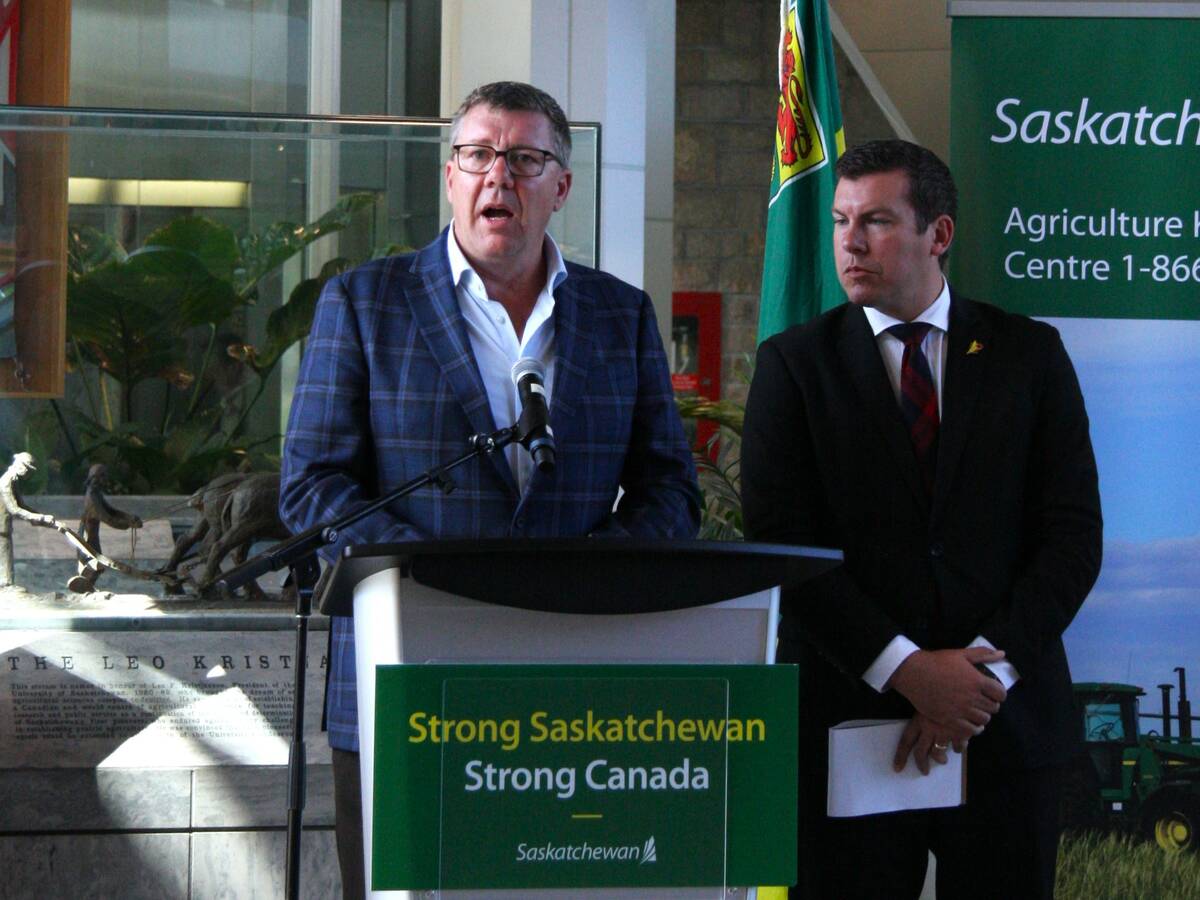It will soon be time for producers to decide what type of grass to include in their pasture mixes.
They must consider the productive potential, persistence and longevity, competitiveness, and the type of soil conditions, including the possibility of flooding or extremely dry conditions.
“One of the more productive grasses used for pastures continues to be meadow bromegrass,” said Harvey Yoder, forage crop specialist with Alberta Agriculture.
“Meadow bromegrass has a bunch-type growth habit similar to timothy. Meadow bromegrass has many basal leaves and provides rapid recovery after grazing when compared to most of the other grasses. It is adapted to the cooler, moist areas, but won’t withstand flooding for more than three to four days.”
Read Also

Key actions identified to address canola tariffs
Federal and Saskatchewan governments discuss next steps with industry on Chinese tariffs
Stands have been known to persist for 10 years or longer, but it is not as persistent as smooth bromegrass and it won’t creep and fill to the same extent as smooth bromegrass.
“Meadow bromegrass provides earlier spring growth when compared to most other grasses,” he said.
“Three varieties of meadow bromegrass are available, including Regar, Paddock and Fleet. There is very little difference in dry matter production between these three varieties.”
Seeding rates should be a little higher than with other species. Meadow bromegrass has about 80,000 seeds per pound compared to timothy, which has close to a million seeds per pound.
The short awn on meadow bromegrass seed causes bridging problems in most seeding equipment. This can be overcome by using coated seed or mixing meadow bromegrass with other material that does not bridge.
“Smooth bromegrass has wide adaptation and continues to be used for pasture production,” he said.
“Smooth bromegrass with its strong creeping habit of growth, similar to quackgrass, is very competitive and can crowd out other species used in pasture mixtures. It is extremely winter hardy and is nearly as productive as meadow bromegrass under a grazing situation.”
Orchard grass, which adapts well to well drained soil, can be used in short term pastures. It has the ability to re-seed itself, as long as opportunity is given for seed development. Individual orchard grass plants are not as persistent as most other grasses.
Sandy soil
Crested wheatgrass is being used in lighter sandy soils and areas experiencing drought. It has early spring growth and will send out seed heads earlier than most other grasses.
Early spring grazing is required to prevent heading. Otherwise, cattle will ignore the headed plants and eat the other species in the mixture. In most cases, crested wheatgrass should not be used in mixtures with other grasses.
“Timothy can be used for pasture purposes, particularly in fields with drainage problems,” Yoder said. “The regrowth on timothy is not as good as other grass species.”
Meadow foxtail can also be used in areas where flooding occurs. It is one of the earlier growing grasses, but requires good grazing management to keep it in vegetative form. It has a light fluffy seed head and can re-seed itself.
Tall fescue is a productive grass, but is slow to start in the spring and is not nearly as persistent as other grasses. It should be considered only in a short term pasture.
“Kentucky bluegrass and creeping red fescue are very winter hardy and are productive in high precipitation areas,” he said.
“However, in most cases, the production is 60 to 70 percent of other cultivated grasses. Because of their low growing habit, they will persist under a continuous grazing situation. Both are very competitive and will have a tendency to crowd out other species in the mixture.”
Legumes such as alfalfa and clover should be considered in pasture mixtures. There is always the possibility of bloat, but that can be greatly reduced if the legume content is 30 to 40 percent or less of the mixture.
















